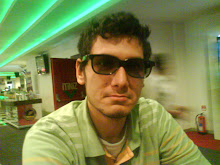
Microsoft on Monday unveiled the first games for its remote-control-free video game system, Kinect for Xbox 360. Several of the titles were pretty generic: a dancing game, a race car game, an adventure game and a fitness game.
And then there was "Kinectimals."
A demo of this bizarre but cuddly game showed a little girl tickling and playing with "Skittles," a virtual tiger cub. She threw sticks for the tiger to fetch and called it to the screen, where it licked the television and wagged its tail for her.
"Come here Skittles!" she called to her virtual friend.
The game features 40 wild animals and 30 types of interactions, according to Microsoft. Kids just wave their hands and talk to the TV to interact with these virtual pets. Microsoft Kinect, an add-on for the Xbox 360 that goes on sale on November 4, has a camera that watches their movements and a microphone to listen to their voices.
